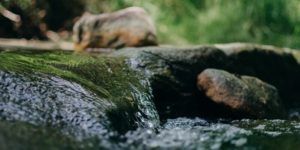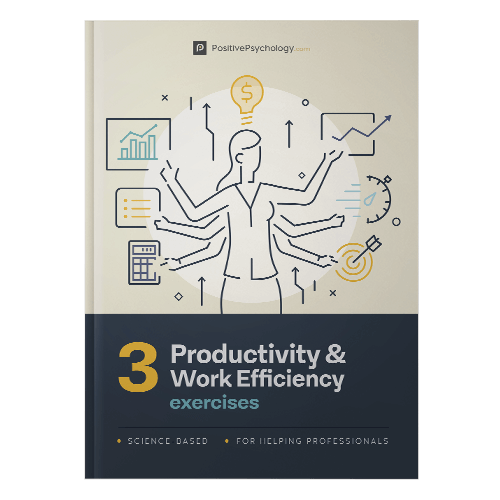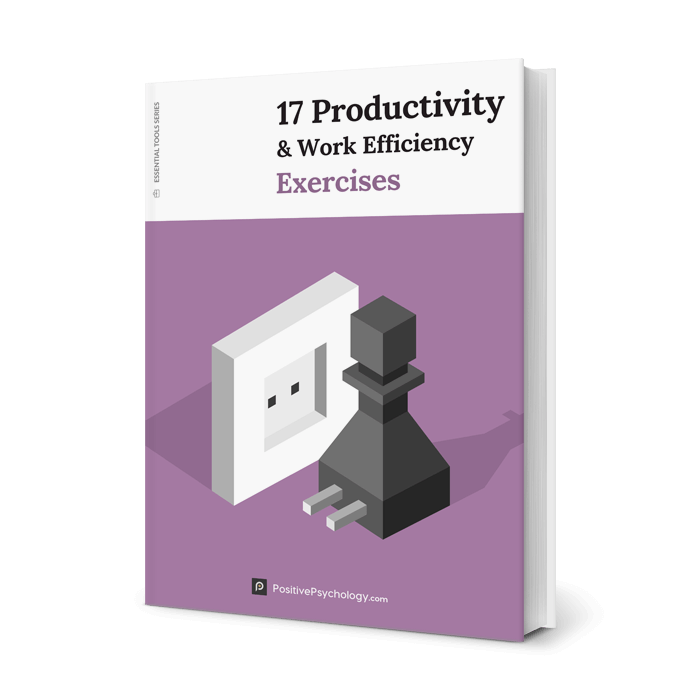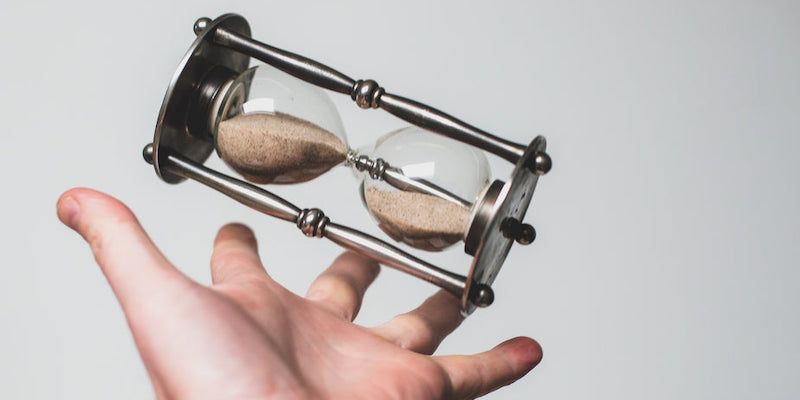How to Measure Flow with Scales and Questionnaires
 Someone who’s really caught up in what they are doing might say “I’m in the zone.” Positive psychologists use a similar term for this state: ‘Flow.’
Someone who’s really caught up in what they are doing might say “I’m in the zone.” Positive psychologists use a similar term for this state: ‘Flow.’
Flow refers to the positive experience of complete absorption in an activity that is both spontaneous and effortless (Csikszentmihalyi, 2000; Nakamura & Csikszentmihalyi, 2014).
In other words, during a flow state, one is so happily absorbed in what they are doing, that their thoughts and actions flow freely. Given that a state of flow is optimal for many aspects of life (i.e., work, creativity, learning, etc.), researchers have a keen interest in identifying how to best measure it.
In this article, we will examine science-based methods designed for the measurement of flow.
Before you continue, we thought you might like to download our three Productivity Exercises for free. These detailed, science-based exercises will help you or your clients become more productive and efficient.
This Article Contains:
How Can We Measure Flow?
Flow is a subjective experience, which creates a challenge when it comes to identifying psychometrically sound measurement (Jackson, Martin, & Eklund, 2008). Moreover, because the enjoyable experience of flow represents both the reason for and outcome of engaging in an activity (Seifert & Hedderson, 2009), its measurement represents an additional challenge for researchers.
Given its subjectivity, the most common way to measure flow is by asking respondents about their experiences, which has been achieved via the following methods:
- Interview questionnaires;
- Experience sampling methods; and
- Self-report questionnaires.
Let’s take a closer look at each of these approaches.
1. Interview Measures
Interviewing techniques are particularly suited to qualitative investigations of subjective constructs, such as flow. This is because interviewing aids researchers in refining a concept or devising a way to measure it.
Semi-structured interviews, which involve a combination of both predetermined questions, as well as those that evolve out of participants’ responses; were often used in earlier research examining flow (Nakamura & Csikszentmihalyi, 2014).
This approach, which may be conducted during an actual flow experience, enables rich and detailed exploratory analyses of a concept (Nakamura & Csikszentmihalyi, 2014). Accordingly, semi-structured interviewing has contributed a great deal to the understanding of flow (Seifert & Hedderson, 2009).
To increase construct validity, interview techniques are also sometimes combined with observation methods. For example, in their examination of intrinsic motivation related to flow during skateboarding, Seifert and Hedderson (2009) employed an ethnographical approach.
Researchers first invested a great deal of time at a local skateboard park observing skaters and recording notes. Following the natural observation period, a randomly chosen skateboarder was administered a semi-structured, open-ended interview— thus combining observation and interview methodologies.
This approach was especially useful for delving deeply into the experience of flow and thus revealing a more vivid account of how it was perceived by participants (Seifert & Hedderson, 2009).
2. Experience Sampling
Experience sampling is a self-report approach in which participants write diary notes describing their experiences as they happen (Csikszentmihalyi, Larson, & Prescott, 1977). Although there is variability in how this method is applied, diary notes are often entered over a week (Jackson et al., 2008).
Experience sampling has been used quite a bit for the study of flow because it provides valuable information regarding the dynamics of emotions or subjective states (Magyaródi, Nagy, Soltész, Mózes, & Oláh, 2013).
On the other hand, it is a time-consuming approach that is limited by the use of selective answers, which can create issues surrounding privacy or illegal behaviors (Magyaródi et al., 2013).
An example of experience sampling used to measure flow was conducted by Clarke and Haworth (1994), who used diary questions to examine whether optimal experiences occurred in situations where skill was matched by challenge.
While experience sampling has been around for a long time, it has been innovated over recent years by adding physiological measures, as well as cell phone and computer applications (Magyaródi et al., 2013).
3. Self-report Questionnaires
Self-report (aka paper and pencil) measures provide a useful way for researchers to measure flow when “… the goal is not to identify but instead to measure dimensions of the flow experience or differences in its occurrence across contexts or individuals” (Nakamura & Csikszentmihalyi, 2009, p. 93).
In other words, self-report measures are not exploratory; but rather, enable the researcher to examine the relationship of the construct to various qualities of interest (i.e., gender, ethnicity, age, occupation, setting, etc.).
Self-report measures are also advantageous because they are both efficient, as well as amenable to various types of analysis methods. A significant limitation of self-report measures, however, is response bias (e.g., the tendency for individuals to avoid truthful or accurate responses).
Similarly, the value and utility of self-report measures are contingent upon their psychometric quality (e.g., validity and reliability). This article will describe several self-report tools that have been applied for the measurement of flow, beginning with ‘The Flow for Presence Questionnaire’ and ‘The Flow State Scale.’
The Flow for Presence Questionnaire

The rationale for focusing on presence concerning flow is that the degree of presence is predicted to control action and experience.
The FPQ is designed to measure flow for presence within a synthetic environment; or, in other words, among users of technical devices. It is thus useful for determining flow states among individuals working in industrial settings (Redaelli & Riva, 2011) or involved in virtual reality technologies (Jennett et al., 2008).
The FPQ is composed of three sections:
- Descriptions of the optimal experience (e.g., flow condition); with a focus on cognitive, affective, motivation, and skills and challenge categories;
- Point-ratings of daily life experiences; and
- The anti-flow experience, which is included to enhance instrument validity (Redaelli & Riva, 2011).
A 5-point Likert scale is used to assess the degree of agreement with each question. This innovative instrument provides essential data regarding well-being among individuals working within technological environments.
Although more testing is needed, the scale has been examined in Italy, Estonia, and Korea. Researchers have suggested that multiple-scale improvements are required (i.e., clear and immediate feedback; clear goals; and increased participant sense of control) to increase the validity and reliability of this instrument (Redaelli & Riva, 2011).
The Flow State Scale
The purpose of ‘The Flow State Scale’ (FSS; Jackson & Eklund, 2002; Jackson & Marsh, 1996) is to measure flow experiences during physical activity. The scale is available in two formats: The original extended version and a modified short version.
The original version contains 36-items using a 5-point Likert scale to assess the degree of agreement with each item. The FSS includes the following dimensions:
- Challenge-skill balance;
- Action-awareness merging;
- Clear goals;
- Unambiguous feedback;
- Concentration on the task at hand;
- Sense of control;
- Loss of self-consciousness;
- Time transformation; and
- Autotelic experience (Jackson et al., 2008).
The extended version of the FSS is useful for investigating the incidence and influence of the above flow dimensions for different people and contexts.
Each dimension contains four questions, for example, in the domain of Action-awareness merging: ‘I do things spontaneously and automatically without having to think;’ and, in the domain of Concentration on Task at Hand: ‘I am completely focused on the task at hand’ (Jackson et al., 2008).
The shorter version of the FSS also contains nine dimensions, but only one question per dimension. The shorter scale, which uses the same response format as the original version, is particularly useful for situations where the more extended version is not practical. Validation research has indicated acceptable psychometric properties for both versions (Jackson et al., 2008).
Whether self-report, interview, observational or experience sampling is used; it is important to note that multimethod approaches that involve both qualitative and quantitative measures are optimal for enabling a comprehensive understanding of flow (Jackson & Marsh, 1996).
This approach of using more than one type of measurement for a single construct, which is also termed ‘triangulation,’ enhances the validity of one’s research study by cross-verifying two or more sources.
22 More Useful Assessments

For ease of readability, these scales, along with those described above, are briefly mentioned below:
1. 12 Item Flow Scale – Mayers, 1978
Measures the frequency of flow experiences in specified activities. Contains 12 items and uses an 8-point semantic differential scale. Item examples include: ‘I clearly know what I am supposed to do;’ ‘I feel I can handle the demands of the situation;’ ‘I feel self-conscious;’ and ‘I enjoy the experience, and/or the use of my skills.’ It is unclear whether the scale has been validated.
2. Witmer and Singer Presence Questionnaire (PQ) – Witmer & Singer, 1998
Measures presence following the use of immersive virtual environments. Factor analysis results for a 29-item version of the scale include the following domains: Involvement; Sensory fidelity; Adaptation/immersion; and Interface quality.
Item examples include: ‘How responsive was the environment to actions that you initiated (or performed)?;’ ‘How compelling was your sense of moving around inside the virtual environment?;’ and ‘Were there moments during the virtual environment experience when you felt completely focused on the task or environment?’ Validity analyses for this 29-item version have shown promise.
3. Immersive Tendencies Questionnaire (ITQ) – Witmer & Singer, 1998
Measures deep engagement in activities, with the main focus on media use. Contains 18 items using a 7-point Likert scale.
Item examples include: ‘Do you ever become so involved in a video game that it is as if you are inside the game rather than moving a joystick and watching the screen?’ and ‘Do you ever become so involved in a television program or book that people have problems getting your attention?’ Preliminary validation studies have shown promise.
4. Online Flow Questionnaire (OFQ) – Chen, Wigand, & Nilan, 1999
Measures flow experiences during web use. Respondents are first asked both the number of years they’ve used the web and the number of hours they use the internet over a week. They are then are asked to read a paragraph that contains a number of statements indicative of flow during web use, such as: ‘I am so involved in what I am doing;’ ‘I am really quite oblivious to my surroundings after I really get going;’ and ‘The world seems to be cut off from me.’
Respondents then answer seven follow-up questions in which they indicate whether or not flow responses such as those above have occurred. If they respond ‘yes,’ they are asked to elaborate on their feelings during such experiences. Validation studies have shown satisfactory results for this scale.
5. The Flow State Scale (FSS; long version) – Jackson & Eklund, 2002; Jackson & Marsh, 1996
Measures flow experiences during physical activity. The original long version contains 36 questions that are designed to provide a fine-grained description of flow characteristics. The FSS uses a 5-point Likert scale.
Item examples, which pertain to an event that has just happened, include: ‘I know clearly what I want to do;’ ‘Things just seemed to be happening automatically;’ and ‘I found the experience extremely rewarding.’ The scale has been validated.
6. The Flow State Scale (FSS; short version) – Jackson & Eklund, 2002; Jackson & Marsh, 1996
Shortened (9-item) version of the FSS with one item per dimension. The scale has been validated.
7. Dispositional Flow Scale (DFS; long version) – Jackson & Eklund, 2002; Jackson & Marsh, 1996
Measures the propensity to experience flow in a particular domain. The original long version contains 36 questions with the same format as the FSS. Item examples, which pertain to a particular experience, include: ‘I knew what I wanted to achieve;’ ‘It was no effort to keep my mind on what was happening;’ and ‘I am not concerned with what others may be thinking of me.’
The scale has been validated among various groups, including internet gamers (Wang, Liu, & Khoo (2009) and musicians (Sinnamon, Moran, & O’Connell (2012).
8. Dispositional Flow Scale (DFS; short version) – Jackson & Eklund, 2002; Jackson & Marsh, 1996
As with the FFS, the longer version of the DFS was shortened to 9 items (one question per dimension). The scale has been validated.
9. Flow Short Scale – Rheinberg, Vollmeyer, & Engeser, 2003
Contains 13 flow items measured on a 7-point Likert scale. The first ten items measure aspects of the flow experience, for example: ‘I feel just the right amount of challenge;’ ‘I am totally absorbed in what I am doing;’ and ‘I am completely lost in thought.’
The last three items measure perceived importance or outcomes of the flow experience, for example: ‘Something important to me is at stake here;’ and ‘I am worried about failing.’ The scale has been validated.
10. The Utrecht Work Engagement Scale (UWES) – Schaufeli & Bakker, 2003
Measures degree of engagement in the work setting. Contains the following three dimensions: Vigor; Dedication; and Absorption.
Includes 17 items and uses a 7-point Likert scale. Item examples include: ‘At my work, I feel bursting with energy;’ ‘To me, my job is challenging;’ and ‘Time flies when I’m working.’ The scale has been validated.
11. Questionnaire for measuring the flow state – Choi & Kim, 2004
This brief (6-item) scale measures flow state during the use of online computer games using a 7-point Likert scale. Item examples include: ‘I was entirely absorbed while playing the online game;’ ‘I felt curious while playing the online game;’ and ‘playing the online game was interesting in itself.’
Psychometric qualities of this brief measure are unclear.
12. Situation-Specific Flow Questionnaire – Oláh, 2005
Measures flow experience using 20 items, with 11 in the domain of Skills and Challenges; and nine in the domain of Absorption and Activity. A 5-point Likert scale is used.
Item examples include: ‘I felt I could meet the requirements of the situation;’ ‘My mind worked in total harmony with my body;’ and ‘Time passed faster than I thought it did.’ This scale has been validated.
13. GameFlow questionnaire – Kiili & Lainema, 2008
Measures flow experience in educational games. Contains 18 items using a 5-point Likert scale. The questionnaire is made up of 3 parts: Flow antecedents; Flow state; and Flow consequences.
Reliability is inconsistent between indicators. Scale development is still underway for this measure.
14. Work-Related Flow Inventory (LF) – Bakker, 2008
Measures positive experiences and mental state during the workday. Contains 13 items and uses a 7-point Likert scale. Includes the following three components: The experience of complete absorption; Enjoyment; and Intrinsic motivation.
Item examples include: ‘When I am working, I think about nothing else;’ ‘I do my work with a lot of enjoyment;’ and ‘I find that I also want to work in my free time.’ The scale has been validated.
15. Core Flow Scale – Martin & Jackson, 2008
Global measure drawn from a larger scale that assesses task absorption and enhanced subjective experience. Contains nine items and uses a Likert scale. Item examples, which refer to participating in an activity, include: ‘I have a strong sense of what I want to do;’ ‘I have a feeling of total control;’ and ‘The experience is extremely rewarding.’
This brief measure has achieved adequate validation for use in certain situations (i.e., music, sports, and work).
16. Short Flow Scale – Martin & Jackson, 2008
Measures the subjective flow experience itself. Contains ten items and uses a Likert scale. Item examples include: ‘I am in the zone;’ ‘It feels like I am in the flow of things;’ and ‘I am totally focused on what I am doing.’
The scale is correlated with the Core Flow Scale and has achieved adequate validation for use in certain situations (i.e., extracurricular, math, sport, and general school).
17. EGameFlow – Fu, Su, & Yu, 2009
Measures learners’ enjoyment of e-learning games. Is useful for informing scale developers about how to improve users’ flow experiences. Uses a 7-point Likert scale and contains 56 items within the following eight dimensions: Immersion; Social interaction; Challenge; Goal clarity; Feedback; Concentration; Control; and Knowledge improvement.
Item examples include: ‘Generally speaking, I can remain concentrated in the game;’ ‘I enjoy the game without feeling bored or anxious;’ and ‘I forget about time passing while playing the game.’ The scale has been validated.
18. Game Engagement Questionnaire (GEQ) – Brockmyer et al., 2009
Measures deep engagement in video game playing and is especially useful for assessing the negative impact of violent games. Contains 19 items with a Likert response scale.
Item examples include: ‘Playing seems automatic;’ ‘If someone talks to me, I don’t hear them;’ and ‘I feel like I just can’t stop playing.’ Preliminary validity studies show promising results.
19. Guo and Poole’s Inventory – Guo & Poole, 2009
Measures flow during immersive human-computer interaction. Includes the following three precursors of now: Clarity of goals; Feedback; and Balance of challenge and skill.
The following six dimensions of flow are included: Concentration; Perceived control; Mergence of action and awareness; Transformation of time; Transcendence of self; and Autotelic experience. The scale has been validated.
20. The Activity Flow State Scale (AFSS) – Payne, Jackson, Noh, & Stine-Morrow, 2011 (adapted from Jackson & Marsh, 1996)
Measures flow state using 34 items and a 5-point Likert scale. The AFSS was primarily adapted from Jackson’s FSS (Jackson & Marsh, 1996). Participants rate recent enjoyable activities.
Item examples include: ‘I did things spontaneously without having to think;’ ‘I had a good idea while I was performing about how well I was doing;’ and ‘The experience was extremely rewarding.’ Preliminary research shows acceptable validity among older adults.
21. Flow for Presence questionnaire – Redaelli & Riva, 2011
Measures presence and flow state among individuals working within a technological environment. Uses a 5-point Likert scale.
Is a promising tool for today’s increased use of technology within a work setting. Preliminary validation studies have shown promise.
22. Flow State Questionnaire of the Positive Psychology Lab (PPL-FSQ) – Magyaródi, Nagy, Soltész, Mózes, & Oláh, 2013
Measures the basic meta-dimensions of flow. Includes 20 items with a 5-point Likert scale. Item examples include: ‘Time passed faster than I thought it did;’ ‘The activity totally engrossed my attention;’ and ‘I knew exactly what I had to do, and I acted accordingly.’
Exploratory factor analyses have yielded promising results.
Commonly Asked Questions on Flow
As we get to understand the concept of flow, a few questions often come up, and we discuss them below.
1. Are their physiological ways to measure flow?
Flow researchers are increasingly interested in addressing the physiological correlates of flow. For example, Harmat et al. (2015) examined users’ frontal cortical oxygenation, and sympathetic and parasympathetic activity during a self-reported flow state while playing the video game TETRIS.
Researchers found that flow state was associated with larger respiratory depth and increased parasympathetic activity. Similarly, researchers interested in cardiac and respiratory activity during video game flow states found that flow was related to faster respiratory depth, deeper respiration, moderate heart rate, moderate heart rate variability, and moderate skin conductance (Tian et al., 2017).
By combining physiological measures such as these with self-report tools, a more comprehensive and objective view of flow experiences is possible.
2. What are the various types of flow that have been measured by researchers?
As being ‘in the flow’ is a construct that applies to various situations, researchers have developed a wide array of measures.
For example, extant instruments have assessed flow in the workplace, during general computer use, during web use, video gaming, during educational gaming, during general media use (i.e., television watching), during various physical activities, during sports, during musical performances, during general school activities, during specific school subjects such as math, during creative endeavors, and during extracurricular activities.
As there is a multitude of situations where a person may feel happily and spontaneously absorbed in a task, many additional flow scales are likely to be developed or adapted in the future.
3. How do I know which measure to use?
When considering the type of flow measure to choose, it is essential first to review your research questions. If you wish to explore the construct of flow in a way that captures rich subjective experiences and possibly enables new aspects of the concept to be discovered, then a more qualitative approach (i.e., open-ended interviews, diary use, etc.) is needed.
On the other hand, if you would like to study the impact of flow between people or settings, then a self-report measure would represent a more suitable choice. As there are several self-report measures from which to choose, you will need to identify the best one for your study in terms of
- psychometric properties (e.g., whether the instrument has demonstrated validity and reliability among populations similar to yours);
- feasibility (e.g., whether the length and nature of the questionnaire are sensible for your study and participants); and
- your specific area of interest (e.g., whether the instrument adequately captures your construct; for example, flow at work, flow during computer use, flow during sports, etc.).
When an ideal measure does not yet exist, researchers sometimes adapt an existing measure to their research questions. However, as this approach modifies the original scale, validity analyses will need to be conducted for the newly adapted scale.
A Take-Home Message
As human beings are generally inclined toward experiences that promote happiness, creativity, and productivity; achieving a flow state represents a natural objective for many. Positive psychology researchers interested in advancing ways to measure flow experiences have developed several instruments and methods that are available for applied use.
Also, because flow experiences contribute to more positive school and workplace experiences; assessment and promotion of flow states also represent important objectives for educators and employers alike. Methods that capture flow during human-computer interaction are especially salient today, given the current pace of technological advancements.
As flow studies provide crucial information about how best to foster psychological and emotional well-being, continued innovative and psychometrically rigorous methods for capturing flow states will continue to emerge.
We hope you enjoyed reading this article. Don’t forget to download our three Productivity Exercises for free.
- Bakker, A. (2008). The work-related flow inventory: Construction and initial validation of the WOLF. Journal of Vocational Behavior, 72(3), 400-414.
- Brockmyer, J., Fox, C., Curtiss, K., McBroom, E., Burkhart, K., & Pidruzny, J. (2009). The development of the Game Engagement Questionnaire: A measure of engagement in video game-playing. Journal of Experimental Social Psychology, 45(4), 624-634.
- Chen, H., Wigand, R., & Nilan, M. (1999). Optimal experience of web activities. Computers in Human Behavior, 15, 585-608.
- Choi, D., & Kim, J. (2004). Why people continue to play online games: In search of critical design factors to increase customer loyalty to online contents. Cyber Psychology & Behavior, 7, 11-24.
- Clarke, S., & Haworth, J. (1994). “Flow” experience in the daily lives of sixth-form college students. British Journal of Psychology, 85(4), 511-523.
- Csikszentmihalyi, M. (2000). The contribution of flow to positive psychology. In J. E. Gillham (Ed.), Laws of life symposia series. The science of optimism and hope: Research essays in honor of Martin E. P. Seligman (pp. 387-395). Templeton Foundation Press.
- Csikszentmihalyi, M., Larson, R., & Prescott, S. (1977). The ecology of adolescent activities and experiences. Journal of Youth and Adolescence, 6, 281-294.
- Fu, F., Su, R., & Yu, S. (2009). EGameFlow: A scale to measure learners’ enjoyment of e-learning games. Computers & Education, 52(1), 101-112.
- Guo, Y., & Poole, M. (2009). Antecedents of flow in online shopping: A test of alternative models. Information Systems Journal, 19, 369-390.
- Harmat, L., de Manzano, Ö., Theorell, T., Högman, L., Fischer, H., & Ullén, F. (2015). Physiological correlates of the flow experience during computer game playing. International Journal of Psychophysiology, 97(1), 1-7.
- Jackson, S., & Eklund, R. (2002). Assessing flow in physical activity: The flow state scale-2 and dispositional flow scale-2. Journal of Sport and Exercise Psychology, 24, 133-150.
- Jackson, S., & Marsh, H. (1996). Development and validation of a scale to measure optimal experience: The Flow State Scale. Journal of Sport & Exercise Psychology, 18, 17-35.
- Jackson, S. A., Martin, A. J., & Eklund, R. C. (2008). Long and short measures of flow: The construct validity of the FSS-2, DFS-2, and new brief counterparts. Journal of Sport and Exercise Psychology, 30(5), 561-587.
- Jennett, C., Cox, A. L., Cairns, P., Dhoparee, S., Epps, A., Tijs, T., & Walton, A. (2008). Measuring and defining the experience of immersion in games. International Journal of Human-computer Studies, 66(9), 641-661.
- Kiili, K. & Lainema, T. (2008). Foundation for measuring engagement in educational games. Journal of Interactive Learning Research, 19(3), 469-488.
- Magyaródi, T., Nagy, H., Soltész, P., Mózes, T., & Oláh, A. (2013). Psychometric properties of a newly established flow state questionnaire. The Journal of Happiness & Well-Being, 1(2), 285-96.
- Martin, A. & Jackson, S. (2008). Brief approaches to assessing task absorption and enhanced subjective experience: Examining ‘short’ and ‘core’ flow in diverse performance domains. Motivation and Emotion, 32(3), 141-157.
- Mayers, P. (1978). Flow in adolescence and its relation to school experience (Unpublished doctoral dissertation). University of Chicago, Chicago, IL.
- Nakamura, J., & Csikszentmihalyi, M. (2009). Flow theory and research. In C. R. Snyder, & S. J. Lopez (Eds.), Oxford Handbook of Positive Psychology (pp. 195-206). Oxford University Press.
- Nakamura, J., & Csikszentmihalyi, M. (2014). The concept of flow. In M. Csikszentmihalyi (Ed.), Flow and the foundations of positive psychology (pp. 239-263). Springer Netherlands.
- Oláh, A. (2005). The possibilities of measuring the optimal experience: A new situation-specific Flow questionnaire test book. HI PRESS.
- Payne, B., Jackson, J., Noh, S., & Stine-Morrow, E. (2011). In the zone: Flow state and cognition in older adults. Psychology and Aging, 26(3), 738-743.
- Redaelli, C., & Riva, G. (2011) Flow for Presence Questionnaire. In L. Canetta, C. Redaelli, & M. Flores (Eds.), Digital factory for human-oriented production Systems (pp. 3-22). Springer.
- Rheinberg, F., Vollmeyer, R., & Engeser, S. (2003). The assessment of flow experience. In J. Stiensmeier-Pelster & F. Rheinberg (Eds.), Diagnosis of motivation and self-concept (pp. 261-279). Hogrefe.
- Schaufeli, W., & Bakker, A. (2003). Utrecht work engagement scale: Preliminary manual. Utrecht University.
- Seifert, T., & Hedderson, C. (2009). Intrinsic motivation and flow in skateboarding: An ethnographic study. Journal of Happiness Studies, 11(3), 277-292.
- Tian, Y., Bian, Y., Han, P., Wang, P., Gao, F., & Chen, Y. (2017). Physiological signal analysis for evaluating flow during playing of computer games of varying difficulty. Frontiers in Psychology, 8.
- Witmer, B., & Singer, M. (1998). Measuring presence in virtual environments: A presence questionnaire. Presence: Teleoperators and Virtual Environments, 7, 225-240.
Let us know your thoughts
Read other articles by their category
- Body & Brain (49)
- Coaching & Application (57)
- Compassion (26)
- Counseling (51)
- Emotional Intelligence (24)
- Gratitude (18)
- Grief & Bereavement (21)
- Happiness & SWB (40)
- Meaning & Values (26)
- Meditation (20)
- Mindfulness (45)
- Motivation & Goals (45)
- Optimism & Mindset (34)
- Positive CBT (28)
- Positive Communication (20)
- Positive Education (47)
- Positive Emotions (32)
- Positive Leadership (18)
- Positive Parenting (4)
- Positive Psychology (33)
- Positive Workplace (37)
- Productivity (16)
- Relationships (46)
- Resilience & Coping (36)
- Self Awareness (21)
- Self Esteem (38)
- Strengths & Virtues (31)
- Stress & Burnout Prevention (34)
- Theory & Books (46)
- Therapy Exercises (37)
- Types of Therapy (64)





What our readers think
Hello,
we intend to measure flow state during a rehabilitation game for french patients having suffered a stroke. We initially identified the FSS2 as the best questionnaire but could not find the french validated version by Fournier et al (2007). Do you know where we could find/buy this translation ? Instead, we thought using the EduFlow 2 as this is a french questionnaire. However, EduFlow2 has been created for educationnal context while we would like to use it in a game context. Do you think this is relevant ?
Thank you very much
Where can I get a copy of this questionnaire (Flow State Questionnaire of the Positive Psychology Lab (PPL-FSQ) – Magyaródi, Nagy, Soltész, Mózes, & Oláh, 2013)? Please help.
Hi Siew,
Unfortunately, I can’t find a copy of this scale published online, although I suspect it should be freely available for use. I would suggest reaching out to Tímea Magyaródi, the first author of the paper in which this scale was published, to see if they can send you a copy. Otherwise you might find some more information here.
Hope this helps!
Kind regards,
Julia | Community Manager
I totally get this! Working in a school environment and the high amount of time students spend on screen, flow is definitely worth having discussions. My guess is flow is more apt to be in place if student is in a high interest topic.
Hi Nicole,
Great article by Heather! Would you know of any resources in Spanish related to Flow? Also, any Spanish-speaking experts in this field. I would love to introduce this concept in our program for Nonprofits in Latin America.
Thanks!
Hi Vijay,
If you search in Google Scholar for ‘Spanish flow state,’ you’ll find various studies exploring this topic conducted by Spanish-speaking experts. Their emails and affiliations should be listed on the journal article pages, so you could try reaching out to a few.
Regarding resources, one great tool is the Spanish version of the Flow State Scale by Calvo et al. (2014), which you could use to assess your population’s dynamic experience of flow (e.g., throughout a day, across activities).
Let me know if this helps!
– Nicole | Community Manager
hey
I wanted to know how do we score the Flow Short Scale by Rheinberg, Vollmeyer, & Engeser, 2003
Hi Divya,
It can be tricky to get this information about scoring interpretation sometimes. It tends to be more common for scales that are applied in clinical settings (e.g., the Beck Depression Inventory), but these cut-offs (e.g., for high, medium, and low levels of a variable) do not always exist outside of clinical settings. I’d say your best bet would be to reach out to the first author of the scale and see if they have any information on this.
By the way, if you need this scale in English, you’ll find it in the Appendix of Engeser & Rheinberg (2008).
I hope this helps a little!
– Nicole | Community Manager
Hi, I am studying hyperfocus and looking at using the Flow Short Scale. Do you think it is the best toll for measuring hyperfocus? Also where can I find this scale online? Many thanks
Hi Eneida,
I would steer away from measuring hyperfocus using a flow scale as these are two different concepts and thus should be measured using their own tailored instruments. Instead, perhaps do a search for the thesis The Adult Hyperfocus and Motivation Scale: A Pilot Study by Angela Swan (2021) and use the items in Appendix C.
I hope this helps!
– Nicole | Community Manager
Hi!
I plan to measure flow in an educational context using Dispositional Flow Scale-2.
For my master thesis the research question is: “To what extend does students experience flow in digital learning?; and to what extend is flow experience in digital learning related to the learning outcome?”
Should I use the long version or the short version of Dispositional Flow Scale-2?
And where can I find the free version of them (or do I have to buy them)?
Hi My,
The DFS-2 appears to be a paid instrument that you can purchase through Mind Garden. If it won’t place too much of a demand on your participants (i.e., they have the time to complete a longer survey), it’s usually best to administer the full scale to ensure internal consistency.
Hope this helps!
– Nicole | Community Manager
Thank you for responding so quickly!
Do you know any questionnaires that happens to be for free and that you recommend to use on my project?
Hi My,
Take a look at the measure of flow in this study (the one by Novak) for a possible measure you could use — I believe it should be free
I hope this helps!
– Nicole | Community Manager
Thank you for the article!
Do you have any suggestions of which model to use for measuring flow experience in movie, video, music video viewers? And one that might go together with VR. What worries me is that consuming media doesn’t require skills and challenge, therefore I foresee that achieving flow state might be more difficult and even more difficult to measure.
Hi Alise,
Although it’s a little contrary to its conceptualization as an activity characterized by challenge and use of one’s skills, flow has been measured as an outcome of passive activities like viewing movies and sport. At a minimum, some components of flow, like the swift passage of time, may occur through passive activities. I’d suggest taking a look at the measures and approach used by Kim & Ko (2019) for some ideas (they measured VR in viewing sports).
Hope this helps a little!
– Nicole | Community Manager